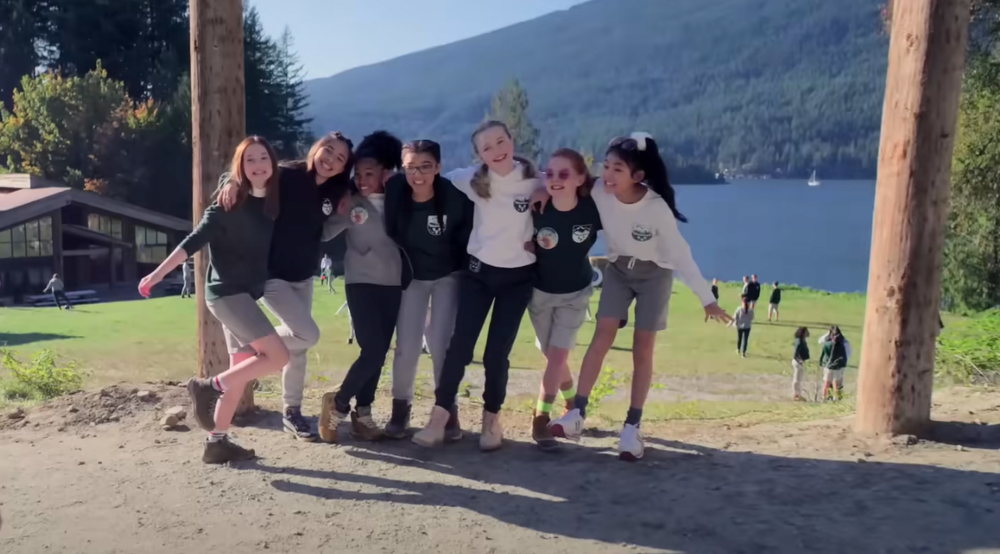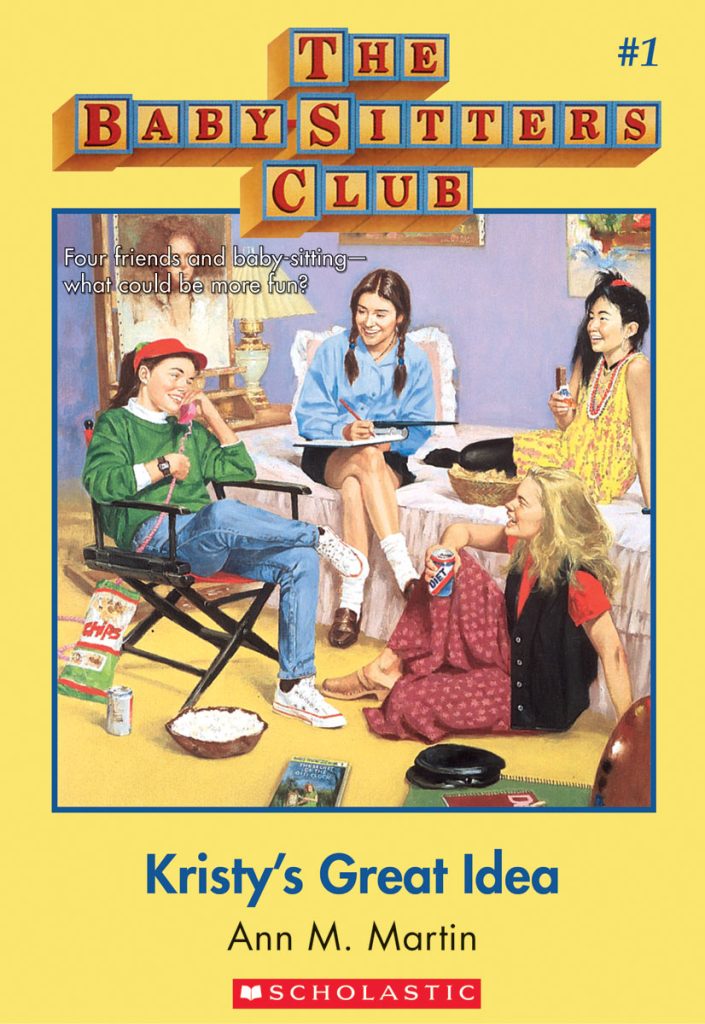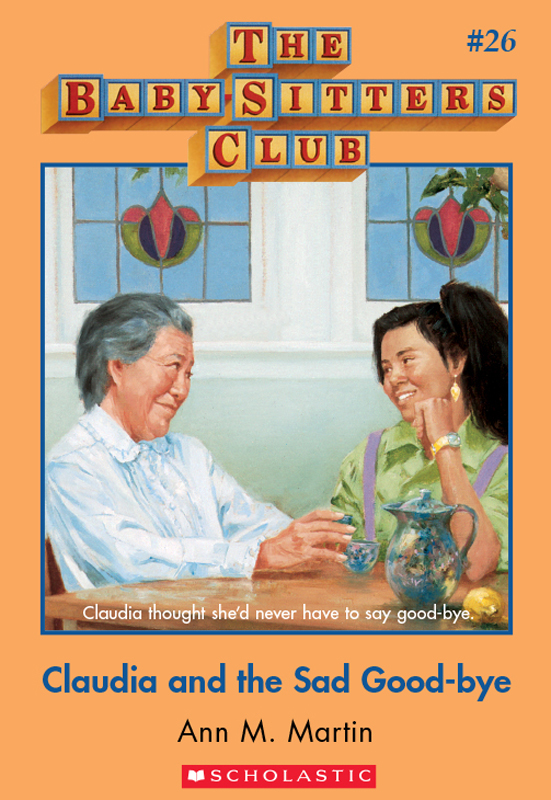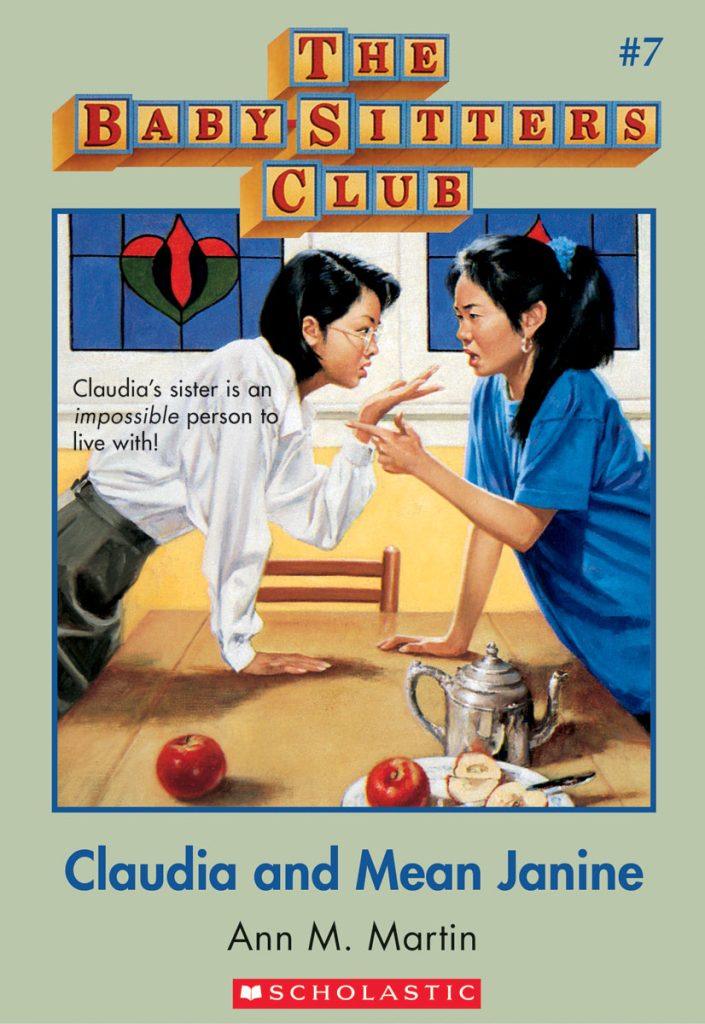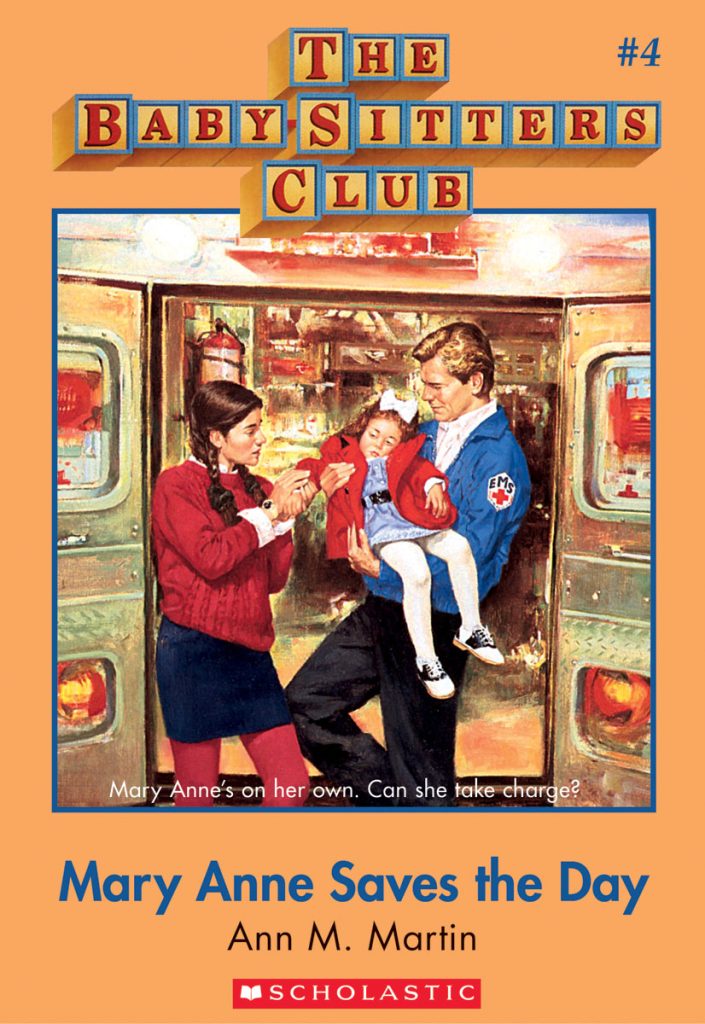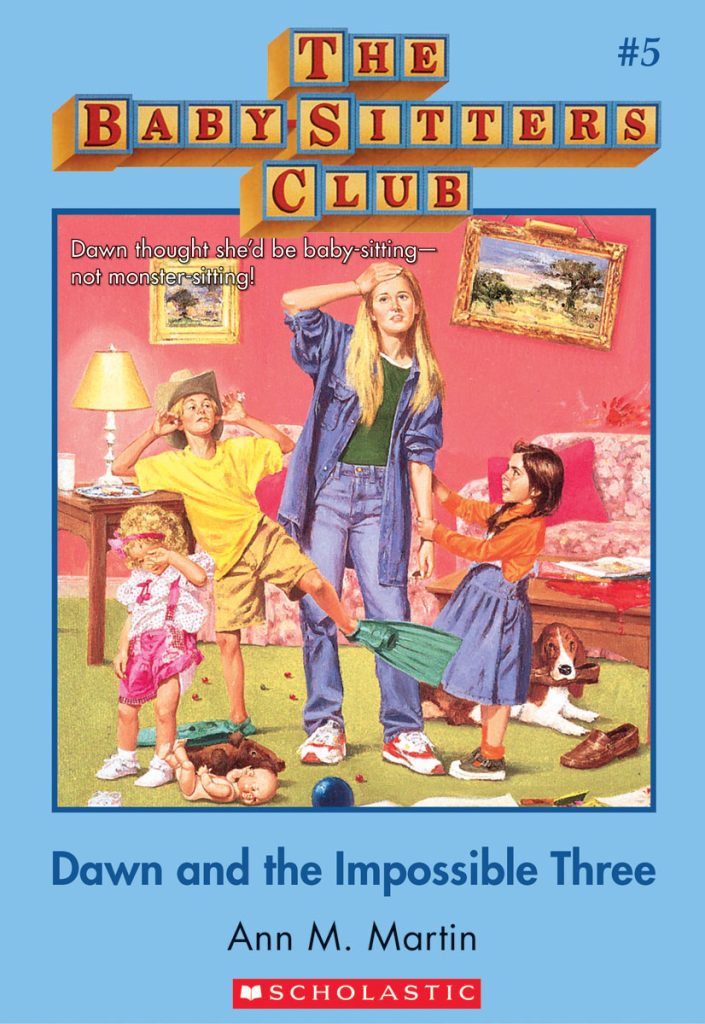I can’t remember exactly when I discovered The Baby-Sitters Club books. Maybe it was at a Scholastic Book Fair at my school. But I’ll always remember the very first book, Kristy’s Great Idea, with its bright yellow cover and alphabet block letters. I saw four friends hanging out, and I specifically saw an Asian American girl who looked like me. She had her own phone in her room, which I desperately wanted too.
Up until that point, I hadn’t ever seen an Asian American girl on a book cover. Claudia wasn’t just some girl. She was creative, wore funky earrings, and had a style all her own. Her side ponytail game was on point. Her grandmother Mimi lived with her family, just like mine, and she was close to her grandma, too. I was definitely never as cool as Claudia in sixth grade—the fluffy perm I had was proof of that—but she made me feel seen. She had spelling mistakes in her journal entries. She wasn’t great at school. Claudia stashed candy all around her room.
Recently, I reconnected to my nostalgia for the covers when book editor Rebecca Kuss tweeted that she bought a painting of Stacey’s Mistake. I had no idea that the BSC covers were originally oil paintings. Artist Hodges Soileau created most of the covers, spin-off series, and products like calendars. I went on a deep dive through Soileau’s Instagram to look at the original oil paintings. Seeing Claudia and the gang again after all these years brought back fond memories.
I was definitely never as cool as Claudia in sixth grade—the fluffy perm I had was proof of that—but she made me feel seen.
Like many BSC super fans, I have a strong emotional connection to these hand painted covers. The fictional characters in Stoneybrook were a very real part of my life. I saw what I was going through as a kid—friendship fights, crushes, growing up—and the BSC members went through the same things. Now, as a mother and writer, these books resonate well beyond my childhood. The beauty of BSC was that big topics—like a death in the family, single parenting, and stepfamilies—were discussed through characters we loved. I spent time reflecting on the BSC books that impacted me the most, as a kid and now as an adult.
The Baby-Sitters Club book that I will always remember is Claudia and the Sad Goodbye when Mimi passed away. The book cover depicts Mimi and Claudia sitting together, sharing a cup of tea. Mimi, with her short gray hair and white shirt, reminded me of my Ahma. The way that Claudia and Mimi look at each other with love was similar to my relationship. The book stayed with me longer after I read it.
I picked up Claudia and the Sad Goodbye again when I was working with my book editor Vicki Lame on revisions for my debut young adult novel, Artifacts of an Ex. Vicki asked if I could include more of the grandmother character in my book. I studied Claudia and the Sad Goodbye to see how it conveyed the heart of their relationship. Reflecting on Claudia and Mimi’s relationship made my book more fully developed. I took notes while I watched the Netflix TV adaptation and cried when Mimi was gone. Every time I think about this story, I get emotional. It addressed grief and loss through the eyes of a young kid and it made it feel very real and honest.
Earlier in the series, Claudia’s grandmother has a stroke in Claudia and Mean Janine. Claudia’s once active grandmother now had trouble speaking and moving. On the cover, Claudia, in an oversized blue and orange sweater, talks back to her sister Janine, in glasses and a plain green sweater, crosses her arms, seemingly annoyed at her younger sister. I was the odd ball kid in my family who dressed differently, I loved seeing Claudia in all of her kooky 80s outfits. As my Ahma grew older, I watched her deteriorate from someone who walked to the grocery store every day to a woman who depended on a wheelchair to get around. Our relationship had to change. It was inevitable and also made me incredibly sad. I know Claudia Kishi is a fictional character, but her journey often felt like mine, even as an adult. There’s comfort in knowing that what I’ve experienced, other people have too.
As a shy kid, Mary Anne Saves the Day was one of my favorites. We see Mary Anne in front of an ambulance while her babysitting charge seems very ill. Mary Anne is known for being quiet and dressing younger than her friends with pigtail braids, but when she is alone with a feverish kid, she must take charge and get the child to a hospital. I was often too scared to talk to adults. I used to hide under pillows when grown ups were in the room, so to see my personality doppelganger talk to doctors, it was inspiring.
I know Claudia Kishi is a fictional character, but her journey often felt like mine, even as an adult.
Years later, the same story holds new meaning for me. In the 2020 TV series adaptation, the child character is transgender. At the hospital, Mary Anne pulls the doctor and nurse aside when they misgenders the child and requests that they use her correct pronouns. It’s a powerful moment. As a mom of a transgender child, I teared up watching the episode. Now, Mary Anne Saves the Day is more than just Mary Anne speaking up. She stands up for the kid because she sees the child for who they are. What a powerful lesson as a parent.

Another reason that Claudia Kishi and the diverse community of Stoneybrook, Connecticut (back before diversity was even a word people used), was important is that it was one of the few places that showed interracial relationships. Back when I read Claudia and the Perfect Boy, I wanted to have a boyfriend and felt like I’d never have one. Seeing Claudia on a potential date, dressed in a flowy black dress, gave me hope that someday, I’d go on a date and have a boyfriend. Claudia’s date ignores her while playing an arcade video game. The exasperated look on Claudia’s face makes it clear she’s not having fun. But even so, movies and TV shows then didn’t show people like me falling in love, so this felt monumental back then. It still does. As an author, I create characters I wish I had seen growing up because we all deserve more than one representation.
When I was 12-years-old, I used to babysit for families in my New Jersey neighborhood. I took care of three kids that were eerily similar to the Barrett kids in Dawn and the Impossible Three. The book cover features three kids and a wildly chaotic mess. In the story, Dawn finds it hard to speak up to their mother. Each time she babysits, Dawn encounters the kids fighting, constant messes, and the mom not sharing important information (like a child’s food allergy). I related to this book because I had a hard time saying no, especially when the parents fought in front of me. Ann M. Martin included a letter to the reader at the end of the book that suggests ways for babysitters to speak up. I ended up saying no to future jobs with the family.

It’s strange to revisit a childhood book that involves racism against Asians and Black people and realize a lot hasn’t changed. The cover for Keep Out, Claudia! Shows Claudia standing in the hallway while three blonde children dressed in their Sunday best, point at her and glare. To me, it’s pretty obvious that they don’t like Claudia. In the book, Claudia babysits for a family who is rude to her. The next time the family calls for a babysitter, the mother specifically requests anyone but Claudia. Jessi, who is Black, arrives and the mom flat out refuses to let her in the house, saying she forgot to cancel. Claudia and Jessi are both angry and confused by the mother’s treatment.
It’s strange to revisit a childhood book that involves racism against Asians and Black people and realize a lot hasn’t changed.
In the pandemic, we all saw incredibly violent acts of racism, like the murder of George Floyd and the anti-Asian attacks targeting women and elders. I had tough conversations with my kids about what was happening in our country. I turned to picture books to help explain this very important but challenging topic, just like Claudia and Jessi helped me make sense of the racism I experienced as a kid. In first grade, another kid called me a “chink.” I didn’t know what the word meant then, but I knew it wasn’t kind. It wasn’t until I read Keep Out, Claudia! that I understood what happened to me was racist. In BSC creator Ann M. Martin’s letter to readers, she wrote about this particular book, “A recurring theme in the Baby-sitters Club books is that of tolerance and acceptance, rather than exclusion. It’s something the characters feel strongly about, and so do I.”
Some people might dismiss BSC as just a kids series and not important literature—but I’d counter that the reason why the Baby-Sitters Club has endured and stayed in our hearts is because it was a safe, empathetic place to understand the complexities of being a kid.
I love the series and continue to adore it, but I hadn’t expected to go back in time and continue to learn lessons from the BSC as an adult. In the books, the babysitters were always friends at the end of each book, even if they disagreed or had a fight, their friendship endured the test of time. Just like its fans, the Baby-Sitters Club will always be our best friend forever.
